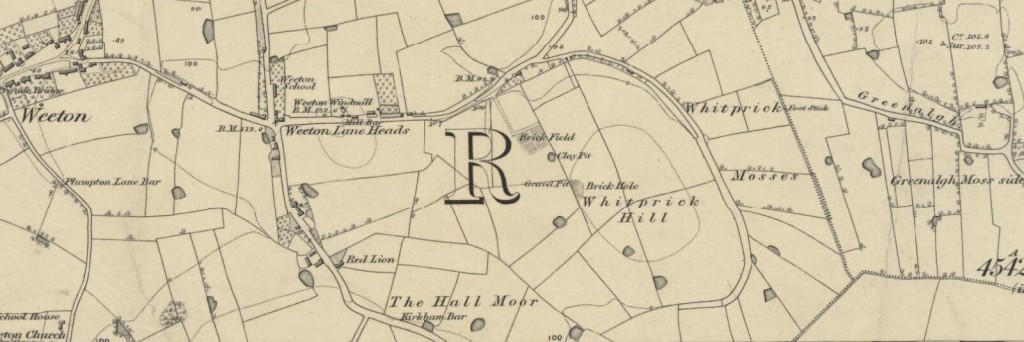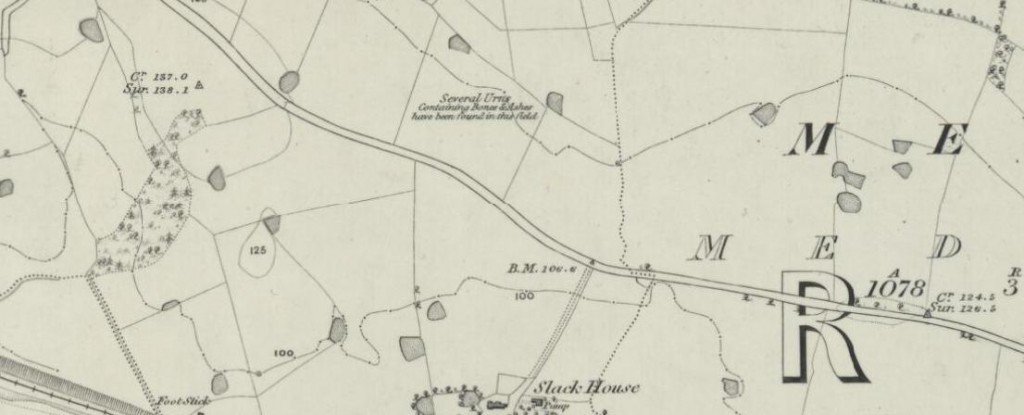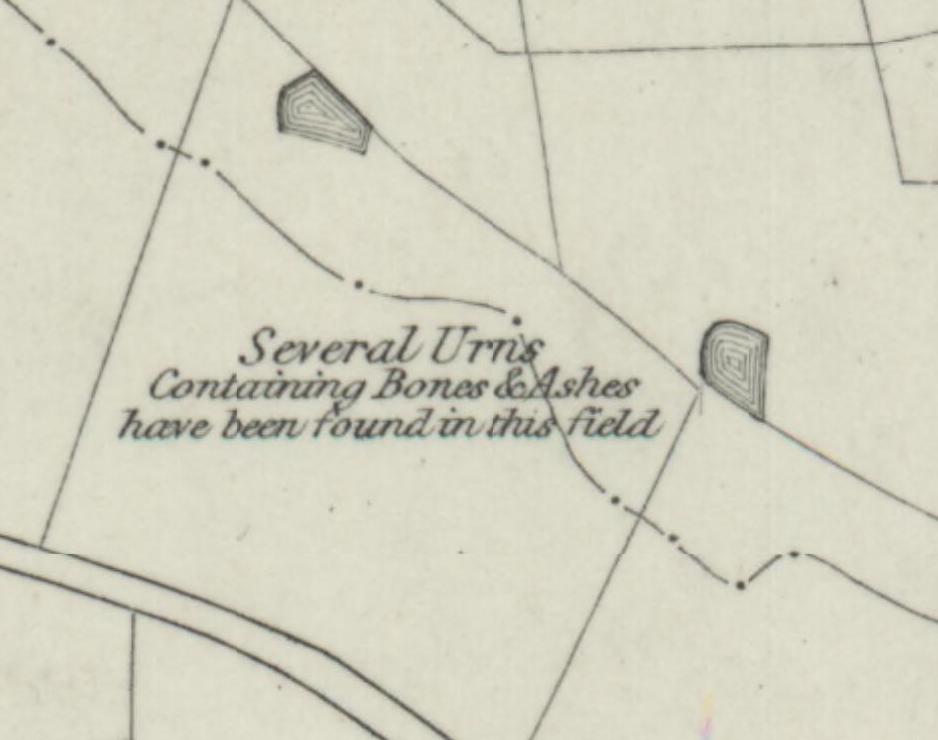The Hairy Boggart of Weeton February 6, 2015
Author: Beach Combing | in : Modern , trackback‘Boggart’, it will be remembered, is a British north(-western) word meaning ‘bogey’: it was a promiscuous word and covered everything from a ghost to a troll (and sometimes a scarecrow). Individual settlements in Lancashire, northern Cheshire and northern Derbyshire, parts of the Ridings (particularly the West) and surprisingly Nottinghamshire had boggart haunted areas. Sometimes they were glades, sometimes they were marshes, sometimes they were houses. Different boggarts had different characteristics and in most cases these characteristics have been sloughed off, forgotten as locals had to deal with other trifles like economic downturns and world wars. However, every so often we can recover details of a local boggart. One example of this is the Weeton Boggart , in the Fylde, in West Lancashire, not too far from the flesh pots of Blackpool.
Others have collected references online but having several more Beach has decided to run them together and try and establish a complete chronologically-ordered list. Several interesting boggart themes come out of the Weeton story: look out for the hair, the fatty ground, and the unlikely transformation into Pan. Also Esoterx has covered the boggart and hairy American Indians…
1850: Before I leave this village of Weeton, I must take you to a cairn not far from Weeton Lane Head, in a field called Moor Hey, on the side of the highway leading to Preston. I relate the strange tale of its discovery. The farmer was ploughing on the spot, when the horses took fright and fled from the field — would the fatty ground smell? — and the man in dismay ran after, being pursued by the demon of the Fylde — something in the shape of a calf. For years the cairn was untouched, but boulders being wanted for paving, it was attacked, when lo, many urns were found, black earth etc. This I have heard told by one, who saw the urns. Thornber ‘Remarks on the Evidences of Roman Occupation in the Fylde District’ Transactions of the Historic Society of Lancashire and Cheshire, 1850-51
1871: [From a newspaper letter] In your account of Weeton Church you say that Weeton, among other features of celebrity, is associated with the eldest boggart in the Fylde country. Preston Chronicle
1872: An hour’s walk from the starting point at Wray Green brought us to the village of Weeton. It is a very silent, serenely-set, quietly quaint-looking place. A broad road runs through it; the houses, whitewashed and coloured in a most chiaro-scuro style, and thatched in many instances, stand considerably back, as if determined to give it a wide berth, and let it go past unmolested… Roman antiquities have been found at Weeton; there are, or were up to a recent period, traces in it of an old Roman road, which is supposed to have run from Kirkham to the Wyre. At Weeton Lane Heads there is a British cairn, out of which several urns have been dug. Weeton – this is another proof of its antiquity – is likewise associated with the oldest ghost of the Fylde country – the hairy ghost, the Celtic equivalent of the ancient satyr. Anthony Hewitson, Our Country Churches and Chapels: Antiquarian, Historical, Ecclesiastical, and Critical Sketches
1872: Weeton is said to be associated with the oldest of the ghosts of the Fylde, viz., the hairy ghost, which has been supposed to be the Celtic equivalent of the ancient satyr. [This reference depends on Thomas Baines, Lancashire and Cheshire, Past and Present, vol. 2, 482, Does anyone have access?] Crossley, Remains Historical and Literary
1876: Leaving Lund it ran through Lea on to Fulwood moor, where it took the name of Watling street, and proceeded on to Ribchester. This road has always been known in the Flyde as the Danes’ Pad, from a tradition that those pirates made use of it at a later period in their incursions into our district, visiting and ransacking Kirkham, Poulton, and other towns or hamlets of the unfortunate Saxons. Numerous relics, chiefly of the Roman soldiery, have been dug or ploughed up at different times out of the soil, bordering on the road, or found amongst the pebbles of which it was composed, and amongst them may be mentioned spears, both British and Roman,horse shoes in abundance, several stone hammers, a battle axe, a broken sword, and ancient Roman coins, all of which were picked up along its line between Wyre mouth and Weeton. Several half-baked urns marked with dots, and pieces of rudely fashioned pottery were discovered in an extensive barrow or cairn near Weeton-lane Heads, which was accidentally opened, and is now pointed out as the abode of the local hairy ghost or boggart. In the neighbourhood of Kirkham there have been found many broken specimens of Roman pottery, stones prepared for building purposes, eight or ten urns, some containing ashes and beads, stone handmills for corn grinding, ancient coins, ‘Druids’ eggs,’ axes, and horse shoes; in the fields near Dowbridge, where several of the above urns were discovered, there was found a flattened ivory needle, about five or six inches long with a large eyelet. A cuirass was also picked up on the banks of the Wyre; but the most interesting relic of antiquity is the boss or umbo of a shield, taken out of a ditch near Kirkham, which will be fully described in the chapter devoted to that township. John Porter, History of the Fylde of Lancashire (Fleetwood: W. Porter 1876)
1912: A ‘hairy ghost’ is associated with Weeton. There is an ancient burial cairn. A History of the County of Lancaster: Volume 7.
1946: ‘there is little about winsome Weeton in these days to recall that here in a far-gone day the pipes of Pan shrilled their wanton summons to the bucolic dwellers in ancient Amounderness to gather round the pagan altar stone for the wild rites of the ancient nature worship. Yet the legend is still preserved of the ‘hairy boggart’ which had its ‘den’ in Weeton Hill, the Celtic version of the Greek satyr Pan, the sylvan deity, god of pastures, flocks and woodlands, half man half beast, goat footed and hairy, whose symbol was the hare and who loved women and the dance; the ‘hairy one’ of Hebrew folklore to whom sacrifices were made (Lev. Xvii. 7) and ‘the shaggy deomon of the hills’ of Arab superstition.’ Hampson ‘Place-Names of the Fylde’
There is a lot of interdependence in these references. The first and most important is, of course, the short passage by Thornber, who had previously demonstrated an interest in boggarts in his history of Blackpool. There is some association with a cairn, but not, in Thornber, the claim, found later, that the farmer opened the cairn. This farmer could have been an eye-witness, but he could also have been ‘Hodge the farmer’ a mythical figure belonging to a mythical past.
Why should the ground smell fatty? Drbeachcombing At yahoo DOT com Anything else on the boggart of Weeton?


The area in question is between two OS maps. Note the legend on the second magnified at the head of this post.



